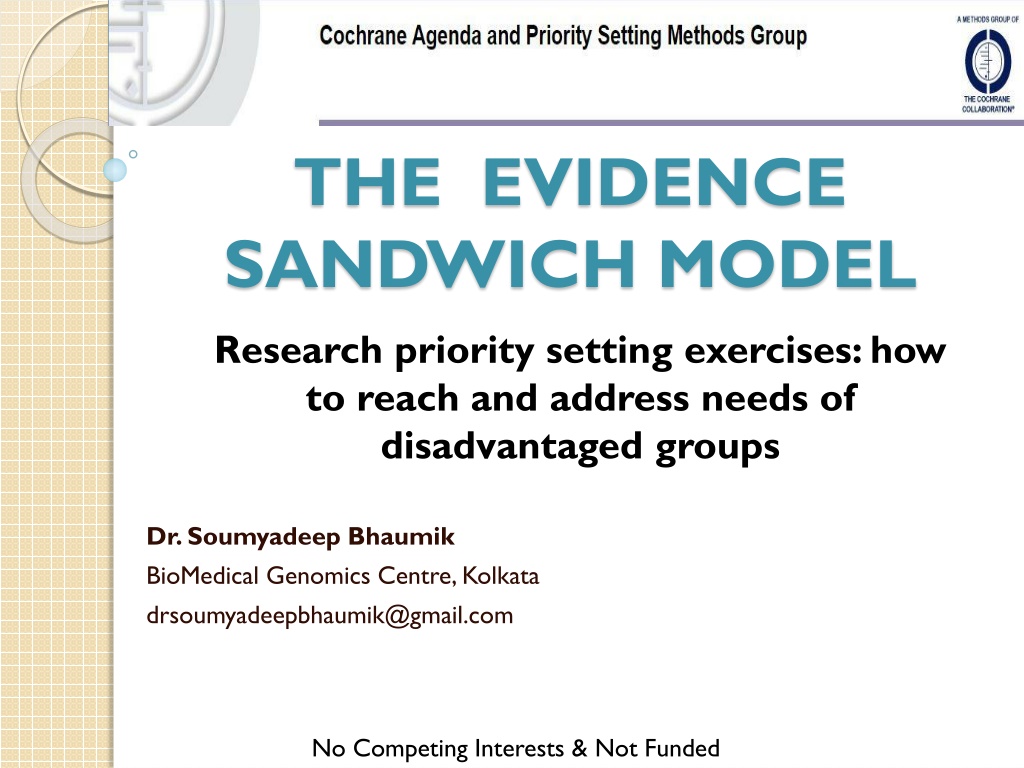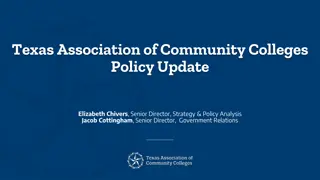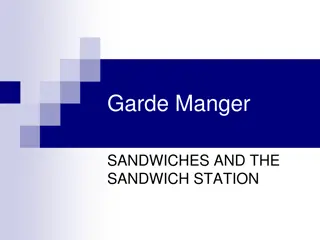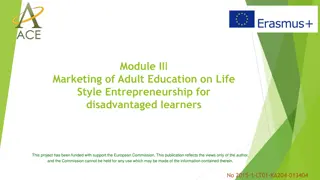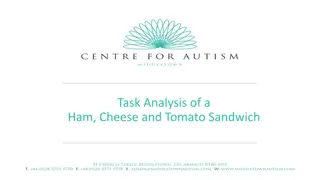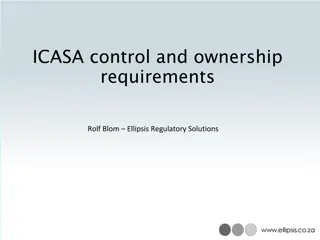Evidence Sandwich Model: Addressing Needs of Disadvantaged Groups
In a world of medical advancements, reaching those in resource-poor settings remains a challenge. The Evidence Sandwich Model explores ways to prioritize research, collaborate, and tackle implementation bottlenecks to deliver basic care to disadvantaged populations. Led by Dr. Soumyadeep Bhaumik, this model emphasizes defining objectives, setting priorities, and engaging the epistemic community to drive change.
- Evidence Sandwich Model
- Disadvantaged Groups
- Research Priority
- Resource-Poor Settings
- Medical Advancements
Download Presentation

Please find below an Image/Link to download the presentation.
The content on the website is provided AS IS for your information and personal use only. It may not be sold, licensed, or shared on other websites without obtaining consent from the author. Download presentation by click this link. If you encounter any issues during the download, it is possible that the publisher has removed the file from their server.
E N D
Presentation Transcript
THE EVIDENCE SANDWICH MODEL Research priority setting exercises: how to reach and address needs of disadvantaged groups Dr. Soumyadeep Bhaumik BioMedical Genomics Centre, Kolkata drsoumyadeepbhaumik@gmail.com No Competing Interests & Not Funded
Agenda of Medicine We live in a world with infinite possibilities. Hearts are transplanted, DNA is decoded, and new medical discoveries are made every day. Yet we continue to be stymied by how best to reach those in resource-poor settings with the most basic care and medicines that we take for granted. What could break through this conundrum? Bill Frist & Richard Sezibera. The Lancet, 2009;374:1485-1486
Formulating Research Agenda Epistemic Deliberation over priority clinical and public health questions.. . Systematic Review and Meta- analyses on priority questions Clinical Expertise Evidence Practical Evidence Patient Preferences Equity Evidence Informed Medicine Research Agenda
What is needed more Acceptability Affordability Answerability Applicability Deliverability Equity Existing Research Capacity Feasibility Potential Effect on disease burden Potential for further research Impact
Evidence Sandwich Model DEFINING OBJECTIVES, MARKING DOMAINS AND ELUCIDATING CRITERIA EVIDENCE PRIORITY SETTING EXERCISE
EVIDENCE SANDWICH MODEL DEFINING OBJECTIVES, MARKING DOMAINS AND ELUCIDATING CRITERIA Role of Epistemic community to set the ball rolling
Defining Objectives/ Scope of Priority Setting Exercise 1. To review existing evidence in relation to the problem identified 2. To prioritize research questions that need to be answered in relation to laboratory, clinical studies, treatment trials and prevention approaches. 3. To develop plans for collaboration, networking and advocacy in relation to research, policy and training 4. To identify potential bottlenecks in the actual implementation of research including availability of funds 5. To limit the scope and limits of priority setting exercise
Considerations for setting priorities within a domain Burden of Disease Status of diagnostic/treatment options their efficacy, adverse event profile, consensus on its use in practice or guidelines Potential availability of better diagnostic / treatment options Affordability of available diagnostic / treatment options Needs of Health Systems Feasibility and Implementation ability Existing Research Capacity (including human resources)
RAPID SYSTEMATIC REVIEW & EVIDENCE MAPPING EVIDENCE SANDWICH MODEL What is already known and what is not ?
Elucidating Research Questions Identify the key stakeholders(including decision makers) affected by the results of this research agenda? Stakeholder engagement is long-term. Derive research questions from stakeholders as well as from data sources including from systematic reviews on relevant topics. Research questions should not be only on clinical/public health safety and efficacy issue but also on implementation , ethics , training, capacity building etc. Considerations defined previously to be refined
Evidence in Priority Setting Exercise Population of interest Intervention to be experimented/ evaluated Control to act as a comparison Outcomes of importance Protocol Formulation of PICO Comprehensive Search such that no research evidence is missed Screening through studies to obtain further studies for analysis Grey Literature Search Search For Evidence Data Collection & analyses Interpretation Summary of Finding & Review Brief Analysis and Review Brief
PRIORITY SETTING EXERCISE EVIDENCE SANDWICH MODEL DELIBERATIVE PROCESS & GROUP DISCUSSIONS Making research practical & relevant Setting priorities
Priority Setting Process All evidence summaries and priority questions to be send to stakeholders and open to modification Survey of Priorities from patients/ affected groups Thematic session with slots for basic science, clinical medicine, laboratory medicine, clinical researchers & identified interdisciplinary work Qualitative Lectures on community experiences Final session consensus on priority recommendations, discussion on potential collaborations & advocacy
Within a session Deliberative quest To ensure voice of all stakeholders are heard Group Discussion With the aim of reaching consensus on priorities Translating between different spheres of expertise Use foresight and Don t Shy from stepping back.
Successful Priority Setting Needs Having the Sandwich Again DEFINING OBJECTIVES, MARKING DOMAINS AND ELUCIDATING CRITERIA EVIDENCE PRIORITY SETTING EXERCISE
Why the Evidence Sandwich Model ? Broad format with adaptability . Structured to guide process. Collaborative & Transparent . Common ground with sense of ownership . Introspection within at every step. Needs of disadvantaged groups addressed. Ensures Equity . Remains open-ended. Ensures balance between best science versus trade-offs .
More Resources : www.capsmg.cochrane.org drsoumyadeepbhaumik@gmail.com DrSoumyadeepB Dr. Soumyadeep Bhaumik BioMedical Genomics Centre Kolkata, India
